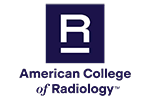Thyroid Disease
Imaging tests of the neck assist in the diagnosis and management of thyroid conditions including thyroid cancer. Ultrasound (US) is usually the first imaging test used. For nodules in the neck, US is usually appropriate to determine cancer risk. CT with or without intravenous (IV) contrast may also be appropriate. For suspected enlarged thyroid (goiter), US or CT without IV contrast is usually appropriate. CT with IV contrast, MRI, or nuclear medicine scan may also be appropriate. If overactive thyroid (hyperthyroidism) or excessive thyroid hormone (thyrotoxicosis) is suspected, US or nuclear medicine thyroid scan is usually appropriate. Imaging is not required for diagnosis of underactive thyroid (hypothyroidism).
US or CT of the neck with IV contrast is usually appropriate before thyroid cancer surgery. CT without IV contrast or MRI with and without contrast may also be appropriate. After treatment for thyroid cancer, US is appropriate to check for residual cancer. MRI of the neck with and without contrast or nuclear medicine full-body scan may also be appropriate. US or CT with IV contrast may be used periodically after treatment to check if cancer has returned (surveillance). If cancer is suspected to have returned, CT of the neck with IV contrast, MRI of the neck with and without contrast, or nuclear medicine full-body scan is usually appropriate. For monitoring medullary thyroid cancer, a type of cancer more likely to spread to other tissues and organs, US, CT with IV contrast, or MRI with and without contrast is usually appropriate.
For more information, see the Thyroid Disease page.
This page was reviewed on December 15, 2021


